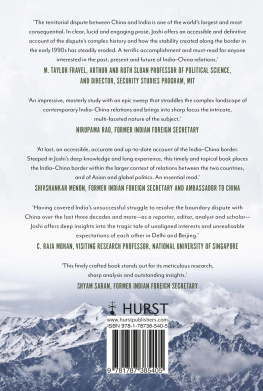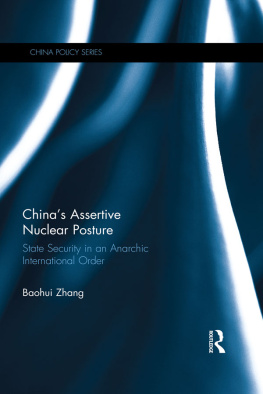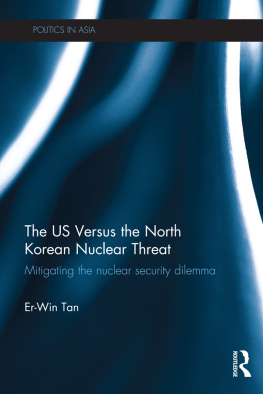
Spies
in the
Himalayas
MODERN WAR STUDIES
Theodore A. Wilson
General Editor
Raymond A. Callahan
J. Garry Clifford
Jacob W. Kipp
Jay Luvaas
Allan R. Millett
Carol Reardon
Dennis Showalter
David R. Stone
Series Editors
Spies
in the
Himalayas
Secret Missions and
Perilous Climbs
M. S. Kohli
Kenneth Conboy
 University Press of Kansas
University Press of Kansas
2002 by the University Press of Kansas
All rights reserved
Published by the University Press of Kansas (Lawrence, Kansas 66045), which was organized by the Kansas Board of Regents and is operated and funded by Emporia State University, Fort Hays State University, Kansas State University, Pittsburg State University, the University of Kansas, and Wichita State University
Library of Congress
Cataloging-in-Publication Data Kohli, M.S., 1931
Spies in the Himalayas : secret missions and perilous climbs/M.S. Kohli and Kenneth Conboy.
p. cm. (Modern war studies) Includes index.
ISBN 978-0-7006-1223-9 (cloth : alk. paper)
ISBN 978-0-7006-2824-7 (ebook)
1. Electronic intelligenceHimalaya Mountains. 2. Electronic intelligenceUnited States. 3. Electronic intelligenceIndia. 4. Espionage, AmericanHimalaya MountainsHistory20th century. 5. EspionageIndiaHistory20th century. 6. MountaineeringHimalaya MountainsHistory20th century. 7. Himalaya MountainsHistory, Military20th century. 8. United StatesMilitary relationsIndia. 9. IndiaMilitary relationsUnited States. I. Conboy, Kenneth J. II. Title. III. Series.
UB256.H56 M68 2002
327.127305109046dc21 2002151341
British Library Cataloguing in Publication Data is available.
Printed in the United States of America
10 9 8 7 6 5 4 3 2 1
The paper used in the print publication meets the minimum requirements of the American National Standard for Permanence of Paper for Printed Library Materials Z39.48-1984.
CONTENTS
List of Illustrations
Prologue
1. Almost Heaven
Epilogue
Appendix
Notes
Index
ILLUSTRATIONS
Map of Nepal
M. S. Kohli and Intelligence Bureau Director B. N. Mullik
Map of India
ARC Director R. N. Kao and Cabinet Secretary S. S. Khera meeting members of the 1961 Annapurna III expedition
Senior intelligence officer Balbir Singh addresses members of the Annapurna III expedition
Map of China
M. S. Kohli
Harish Rawat
Sonam Wangyal
Gurcharan Bhangu viewing a purported yeti scalp and hand
Sonam Gyatso
Erecting the sensor antenna in the snowfield near Mount McKinley
Escort officer Mac with Indian mountaineers at the New York Worlds Fair
Nanda Devi from the south
Nanda Devi and Nanda Devi East photographed from Nanda Kot
Map of the Sanctuary
Map of Uttar Pradesh province
An ARC Helio Courier landing at the Kalsi airstrip during support operations
Sherpa Kalden hauling supplies up Nanda Devi
Camp Three, Nanda Devi
Camps along the south face of Nanda Devi
An Indian Air Force Alouette chopper removing supplies from the Sanctuary helipad
Nanda Kot from the south
Nanda Devi photographed from a Twin Helio
Tucker Gougelmann, senior CIA paramilitary adviser in India
Kohli and Defense Secretary Harish Sarin
Nanda Devi showing likely lines of fall and nullahs leading to the moraine
On the march toward Nanda Kot
Kohli and Barry Corbet on Nanda Kot
Nanda Kot from the perspective of Advance Base Camp
Edging over the Saddle
Camp Two, Nanda Kot
Sam Currie prior to leaving the Nanda Kot base camp
CIA survival instructor Joe Mazerowski with Rawat and ARC officer M. K. Anand
Map of NEFA (now Arunachal Pradesh)
Sam Currie receiving the Intelligence Medal of Merit from CIA Director Richard Helms
PROLOGUE
In modern times, intelligence officers often fall into one of two categories. There are those on classic espionage assignmentsthe clichd, tedious, and often frustrating attempts by case officers to extract kernels of information from foreign nationals in the back alleys of places like Moscow and Geneva. Then there are those on paramilitary operationsbrushfire wars fought by covert warriors who train, direct, and often lead guerrillas in obscure corners of the globe like Afghanistan, Laos, and Nicaragua.
This story is neither. Due to a pressing requirement for unique skills, the intelligence agencies of the United States and India could not turn to their normal roster of spies or paramilitary operatives. Instead, they had to draw on a small fraternity of elite mountaineers to place a delicate monitoring device at the roof of the world. Gone were cloaks and daggers; in their place were crampons and ice axes.
To the credit of those involved, the story stayed a secret for over a decade. Not until 1978 did details begin to emerge in the press. Many of those details, however, were based on hearsay and supposition; many, not surprisingly, were inaccurate. The more inflammatory chargessuch as the holy Ganges being poisoned by radioactivityhad an incendiary effect in India. This effect was even more pronounced because of the political situation at the time. A fragile opposition alliance had recently come to power, and the former ruling party, now the outspoken opposition, was seeking a comeback.
Over the ensuing decades, oblique mention of the covert climbs occasionally cropped up in mountaineering journals, but the full story has never been told. Not a single member of these expeditions ever went public with an authoritative account. One of the authors, M. S. Kohli, was a joint leader of the mission. He kept his participation veileduntil now.
Here for the first time, all the Himalayan mountaineering expeditions sanctioned by the U.S. and Indian intelligence agencies are chronicled in detail. It is important that this story be told for several reasons. First, it puts Indo-U.S. relations in a more nuanced and pragmatic light. On the surface, bilateral relations often seemed strained at the highest levels. The relationship between President Lyndon Johnson and Prime Minister Indira Gandhi, which was initially warm, developed a noticeable frost. Between intelligence agencies, however, cooperation in areas of bilateral interest, including the Himalayan project, was uninterrupted. And among the expedition members, rapport was outstanding.
Second, it is not often that the story of an intelligence operation can be told in such rich operational detail. This is possible in large part because mountaineers have a penchant for notations; their climbing diaries are often the only records they have of defining moments in their lives. This books draws on the notebook entries of several of the participants, offering insights and even sensations that are usually lost in accounts of other covert operations. Having such an authentic account sheds proper light on these controversial events and goes far in dispelling long-standing rumors that once caused such diplomatic and political angst.
Last, it is a good yarn. Rarely can one appreciate the excitement of a major Himalayan expedition mixed with clandestine overtones. And from a wholly mountaineering perspective, it fills in gaps in the history of ascents around the Nanda Devi Sanctuary during the mid-1960s. Until now, this period has been a black hole in climbing references.
This book is based on both written sources and extensive oral interviews. In the United States, the written sources were gathered from the Foreign Relations of the United States series, as well as releases in the Declassified Documents Reference System and relevant media transcripts recorded by the Foreign Broadcast Information Service. Particularly helpful were the electronic briefing books on Chinas nuclear weapons program compiled by the National Security Archives.
Next page













 University Press of Kansas
University Press of Kansas